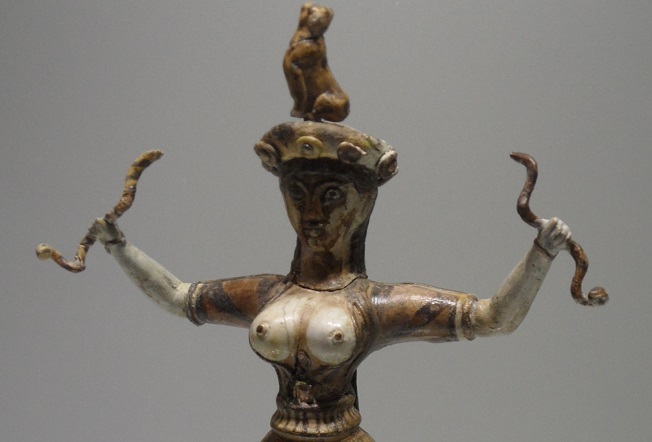
Treasures in the Iraklion Museum of Archaeology illustrate the story of the ancient goddess of nature and fertility.
NOTE: Of course, Thor and I had to make another trip to Greece, as he’s fallen as much in love with the islands as I am. This time, in addition to other island-hopping, I wanted to return to Crete after 37 years. My first months-long trip was as a hippie backpacker, camping in the ruins and falling under the spell of the mysterious, vanished Minoan culture. This time, I got to introduce Thor to “glorious Kriti” and research more settings for my novel-in-progress, THE ARIADNE DISCONNECT. This new blog series started October 19, 2019, and will continue every Saturday.
As I’ve discussed in previous posts in this series, our sketchy understanding of Minoan (or Keftiu) history is mostly based on the physical remnants of artifacts and architecture. Historians and archaeologists are still putting the puzzle pieces together. However, from the evidence and correlations with known Earth Goddess worship (under various names) around the ancient Mediterranean, Egypt, and Middle East, it seems clear that the most important Minoan deity was the (unnamed) Goddess who was the personification of Nature. As we’ve seen in the frescoes and other art, these people seemed to take joy in the bountiful nature — plants, animals, sea — surrounding them. Images of the Minoan goddess are often associated with fruitful outdoor settings and animals. And because she is also associated with sacred serpents of underground mysteries and regeneration, she is also a chthonic (deep earth) goddess who represents elemental powers, such as the frequent earthquakes in this region. She is also frequently depicted as descending from the sky, so she really covered all the bases!
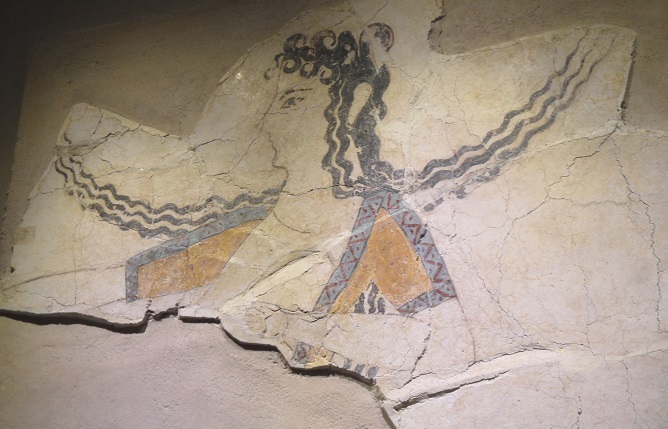

She is the very image of the near-future Ariadne in my novels, descended from a long line of Princess/Priestess Ariadnes on Crete — but more on that below….
One of the earliest figures of the earth goddess in the museum is this libation vessel from around 2000 BC (central figure):
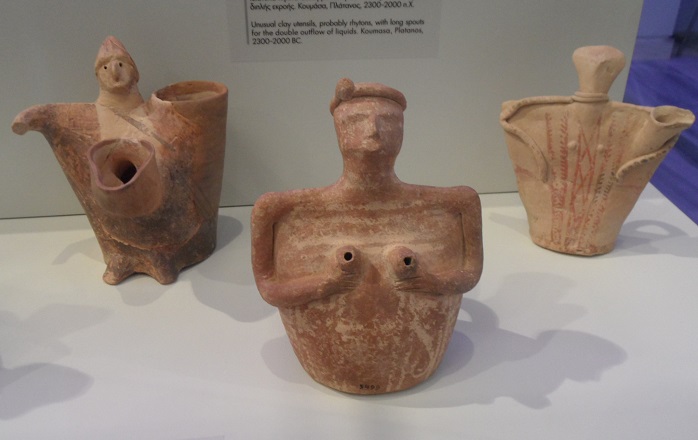

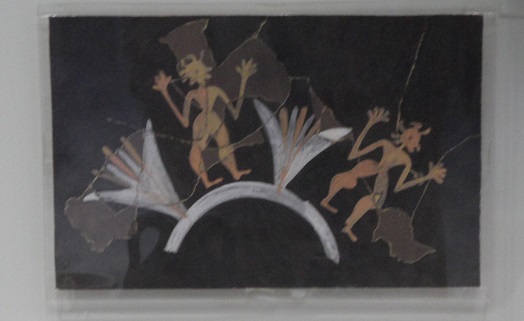
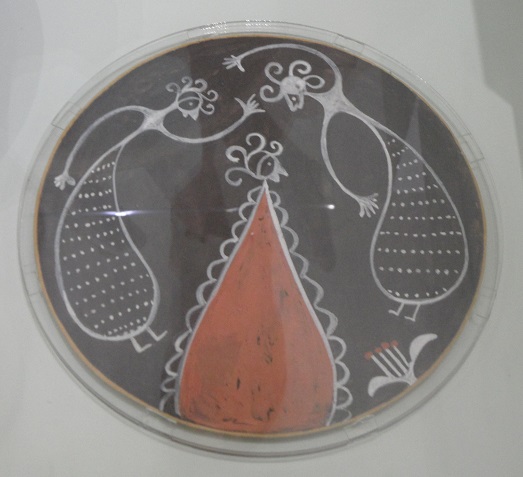
As the archaeologist Nicolas Platon noted of the artifacts, “A hymn to Nature as a Goddess seems to be heard from everywhere, a hymn of joy and life.”
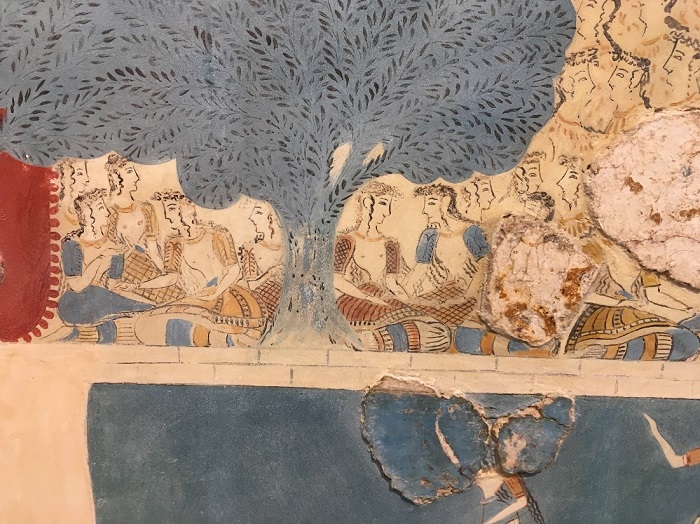
The museum also features many “worship figures” with stylized poses from various Minoan periods, such as these early ones from around 1800 BC:
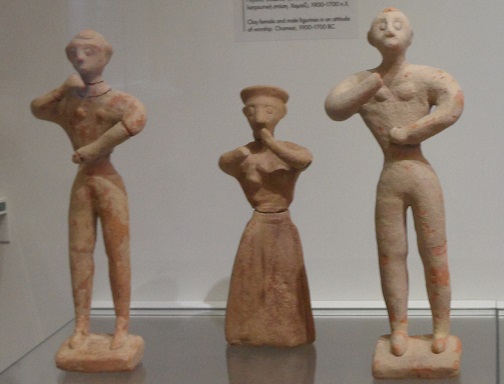
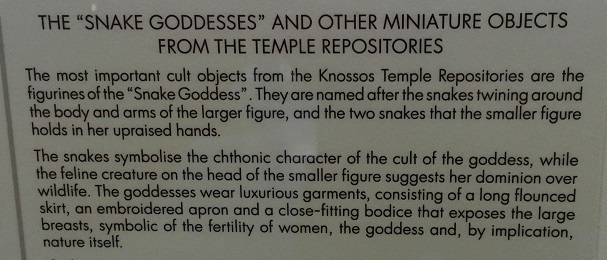
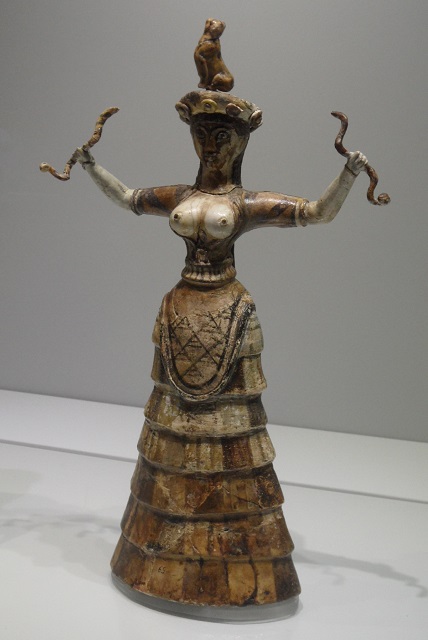
These beautiful faience figurines (which may be priestesses embodying the goddess in ritual, or the Goddess herself) are my favorite artifacts in the museum. Beautiful, magical, and powerful — the Goddess we need today!

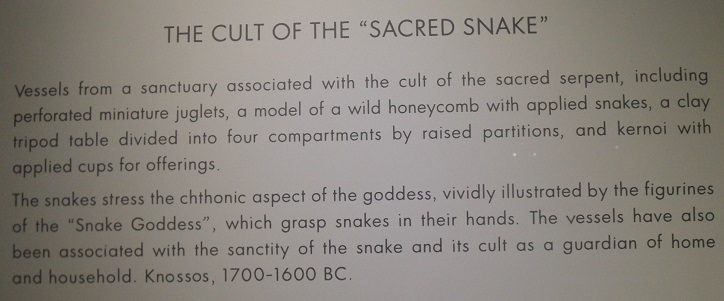
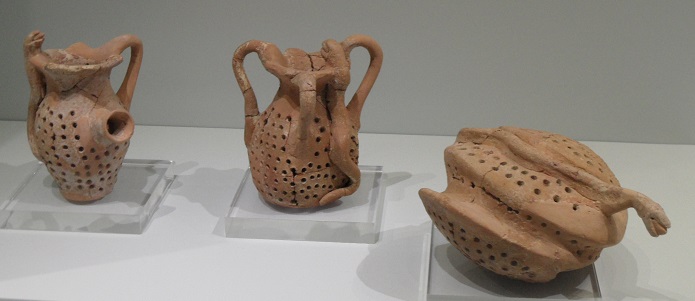
There can be little doubt of the important roles women played in the Minoan culture, as shown so widely in their art. On the side of this larnax burial casket, a priestess (the white figure) pours libations as part of the ritual sacrifice of a bull:
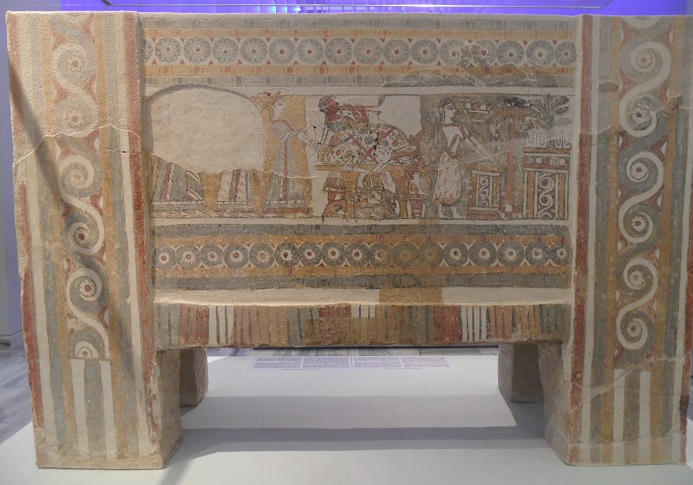
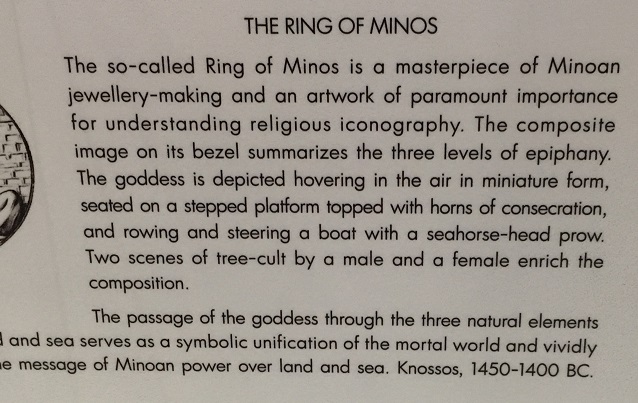
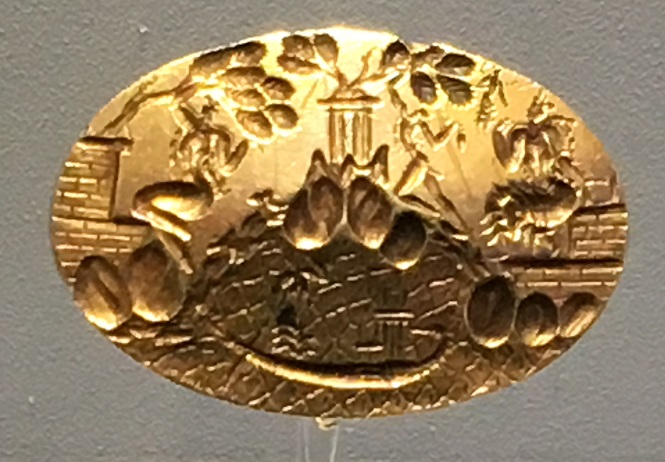
This important artifact came to light only around 70 years ago, found close to the Knossos palace and taken by a local priest. When he died, one of his heirs sold it to the museum, where it adds to the historical record.
Another of the amazing seal rings:

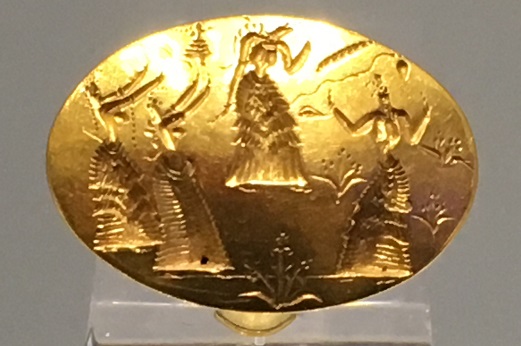
The Minoans seemed fond of creating small models, probably for home shrines, since there were no grandiose temples as in other cultures.
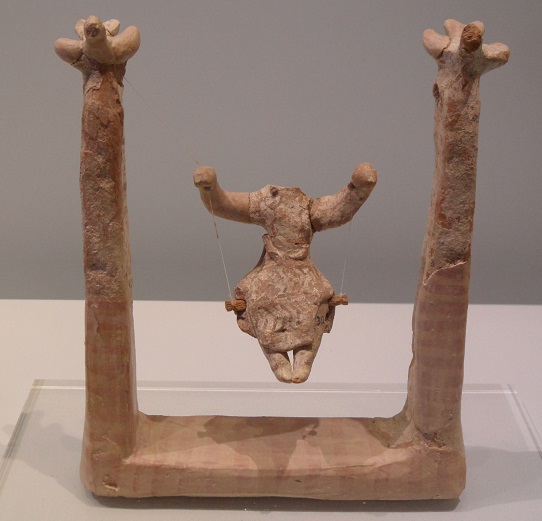
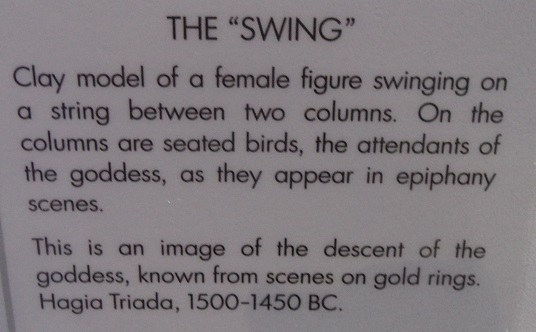
The museum displays several of these strikingly stylized goddess vessels, arms upraised:
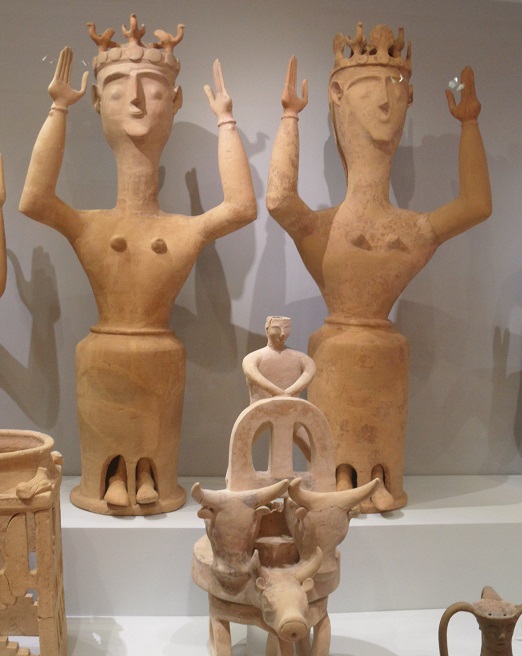

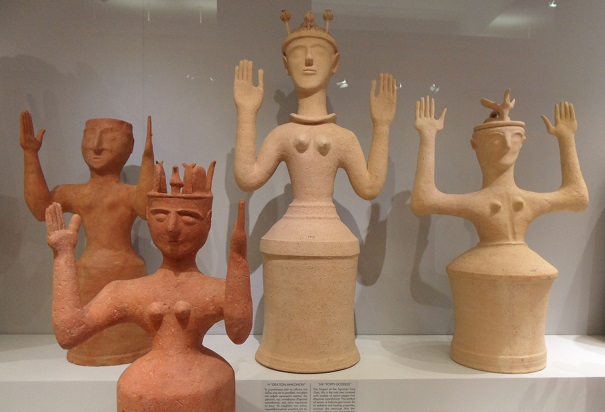
The central goddess figure wears a crows of poppy pods, with the clearly-marked incisions used to harvest the opium sap. There is evidence in nearby cultures of the time for use in rituals, as well as medicinal purposes, and poppy plants were widely cultivated on Crete.
And now on to Ariadne, daughter of King Minos and priestess of the labyrinth.

Briefly, there were probably multiple kings named Minos — or it may have been the official title. Brief mentions by later Greek bards and historians put a King Minos at various points in prehistory and early Greek history, including the Trojan War. Later mainland Greek myths hold that the first Minos offended Poseidon (a god not actually known to early Minoans), who caused his wife to mate with a bull and give birth to the half-man, half-bull monster the Minotaur. The monster was locked at the heart of the labyrinth, with priestess/Princess Ariadne holding the secret of the winding passages.
Some historians locate the original labyrinth as the winding passages of the palace at Knossos, where priestess Ariadne would have performed rituals to the Goddess.
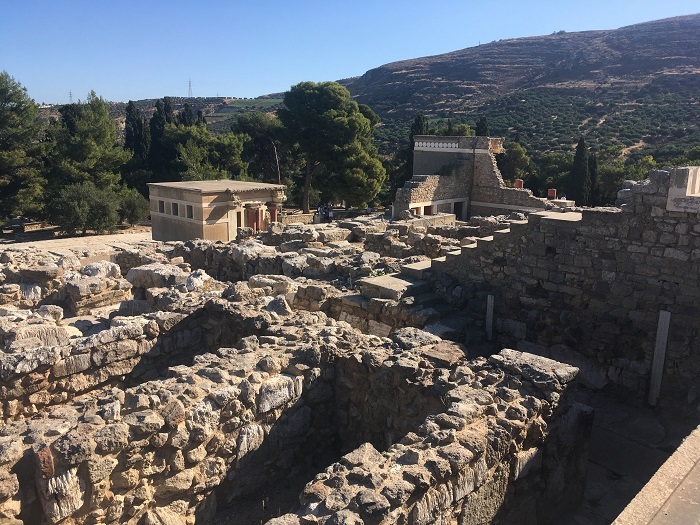
This model of the second Knossos palace complex shows how it certainly could have served as a labyrinth:
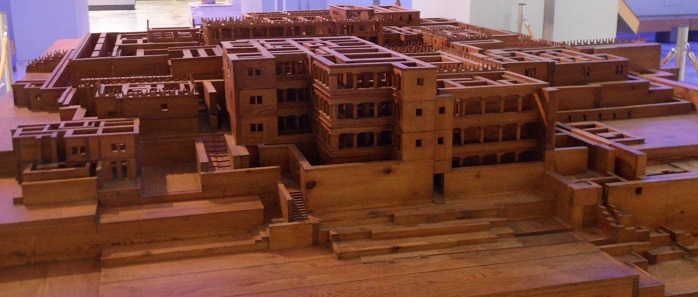
Sir Arthur Evans, in his excavations, found a complex, inlaid meander pattern on the ground floor of a Knossos corridor, leading to a courtyard surrounded by pillars, and he identified it as the labyrinth of myth. In THE MINOAN WORLD, Arthur Cotterell reports that the courtyard is regarded by many Greeks as a dancing ground and also labyrinth. Priestess Ariadne may have been performing a sacred dance to the pattern of the winding labyrinth. There are many later versions of the classic labyrinth pattern, including one in a park in my town, followed by those meditating on an inward journey toward sacred enlightenment. Here is the pattern on an ancient Minoan coin in the museum:
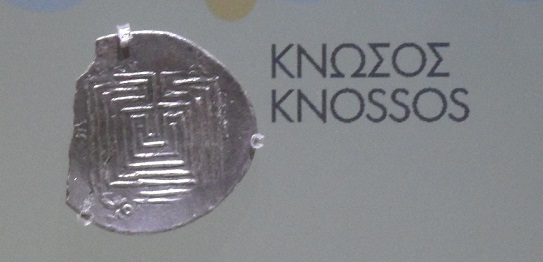
When I created my character of a near-future Ariadne who finds herself channeling ancient healing powers, I wasn’t consciously aware of the dancing aspect, but from my early sojourn on Crete was captivated by the Serpent Goddess figurines. Ariadne, in her healing trances, summons the power of chthonic serpents, powers that can be benign and also dangerous. Somehow I also made her a dancer:
She opened stinging eyes and touched the blossom again, careful not to loosen its tenuous hold on the rocky soil. Helen would have reminded her that the first poppies meant rebirth for the islands, the blood-red cups a sign of the coming Easter season. Smiling through her tears, Ariadne nodded, rose to her feet, and lifted her chin. Raising her arms in a smooth sweep—bird wings, lifting, circling—she stepped slowly, ceremoniously, dipping and rising in a peasant dance. She flung back her head, crying out to the sky as she spun, twirling. Her feet were light over the grass, feathered, as she danced the silent music ringing up from the earth. Finally she dropped onto the grass, blood pulsing in her ears. She pressed her flattened palms over the soil and felt the forces whirl around this center, pulling her inward. Into the comforting, frightening velvet darkness at the heart of mother earth. A tense fullness poured into her, welling up like the underground spring flowing beneath her.
“Chairete!” Rejoice! Have you ever walked a labyrinth?
Next week: More sacred symbols and shrines at the museum.

*****
You will find The Rambling Writer’s blog posts here every Saturday. Sara’s latest novel from Book View Cafe is available in print and ebook: The Ariadne Connection. It’s a near-future thriller set in the Greek islands. “Technology triggers a deadly new plague. Can a healer find the cure?” The novel has received the Chanticleer Global Thriller Grand Prize and the Cygnus Award for Speculative Fiction. Sara has recently returned from another research trip in Greece and is back at work on the sequel, The Ariadne Disconnect. Sign up for her quarterly email newsletter at www.sarastamey.com

1 thought on “The Rambling Writer Returns to Crete, part 20: The Minoan Earth Goddess”